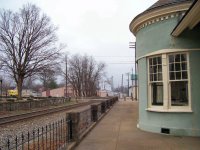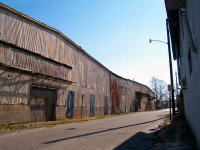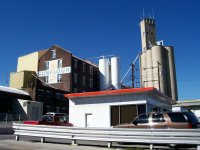Hopkinsville, 100 years ago
The following paragraphs about Hopkinsville, Kentucky, were written 100 years ago for the Handbook of Kentucky ("The Seventeenth Biennial Report of the Bureau of Agriculture").
I've added some relevant photos from past Prairie Bluestem posts. The notes below each photo are linked to the post the photo originally came from.
It's interesting to think how advanced Hopkinsville was in 1907, when many homesteaders of the Great Plains were still proving up on the land they obtained through the 1904 Kincaid Act.

HOPKINSVILLE
Revised 1907 by Chas. M. Meacham, Mayor
Revised 1907 by Chas. M. Meacham, Mayor
Hopkinsville, the county seat of Christian County, KY, is two hours travel by Louisville & Nashville railroad from Evansville Ind., and Nashville, Tenn., and seven hours from Louisville.
The Louisville & Nashville and Illinois Central railroads intersect here, traversing the best coal, grain and tobacco lands in western Kentucky.
The white graded schools, three buildings, have 1400 pupils; colored public schools, 1300 pupils. Two flourishing colleges, Bethel Female, for young ladies and South Kentucky, for both sexes, and other private schools and also a college for colored people. There are ten white and seven colored churches, representing the leading denominations.
Hopkinsville has one national, three State and one savings bank; capital, $380,000, deposits July 1, $1,800,000. Seven tobacco warehouses, four stemmeries and rehandling houses, branch factories of two of the largest tobacco companies in the world; wagon factory, lawn swing factory, three cigar factories, and one canning factory.
We have a handsome opera house and a brick tabernacle for large gatherings, seating 5,000 people.
Hopkinsville has water works, gas works, electric lights and an automatic alarm system, the best in the State. The waterworks for fire, by pressure, throws two streams 100 feet. We have also a wagon, two ice, brick and lime factories, large planing mill, four merchant flouring mills turning out 2000 barrels a day, a steam laundry and dye works and two telephone exchanges.
The hotels are excellent and unsurpassed anywhere in the State. We have prosperous home building and loan associations, six newspapers and the handsomest business houses in Western Kentucky.
Western Asylum for the Insane, with a population of 1,300, is located within one mile of the city and spends $150,000 annually.
A belt line railway has just been completed through the manufacturing district.
The dry goods and grocery trade amounts to $250,000 annually.
The city is famous for culture, good order and healthfulness. New manufactories are free from city taxes for five years. There are over twenty miles of excellent macadamized streets, 110 miles of free turnpikes, extending into fine farming sections, and at least eight miles of sewerage system.
Source: Handbook of Kentucky by Hubert Vreeland, Kentucky Bureau of Agriculture, Labor and Statistics. Published in 1908 by the Globe Printing Company of Louisville, KY.

Related posts:
Mogul Wagons
More About Mogul Wagons
Signs of Days Goneby
Peace Park in Hopkinsville
Prejudice and Segregation
Also check the "Local history" tag below.




No comments:
Post a Comment